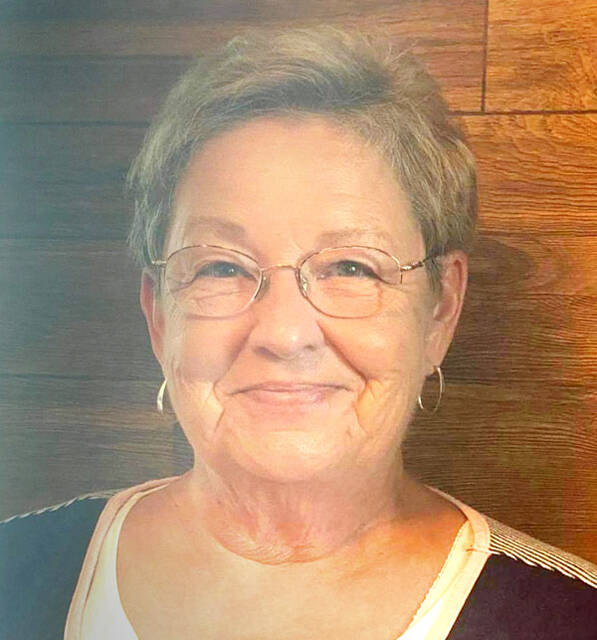CHAPTER 19 — Part One
It is the summer of 1874 the War has been over almost 10 years. Lois Ann (oldest daughter of John and Eleanor (Ralston) Wickerham) is 23 and is starting a new adventure in the village of West Union which is located about twelve miles from “The Ridge” in Adams County, Ohio.
“She’s the one with the straw-colored hair; some call her the white-headed one. It’s her sister, Candace, who has the beautiful golden hair. Lois Ann is very frail. The color must just be bleached out of her hair the same as it is out of her face. She would be really pretty if she looked alive. She would look more at home if she was playing a harp on the “other shore.” She thinks she can be a milliner but she’ll soon be in her casket. Trimming hats is a tiresome business. Besides, she ought to be just sitting in the shade.”
“That’s just what they said!” and Martha sat down on the grass hurriedly as if exhausted, but well pleased with her rehearsal. Lois Ann and her old schoolmate, Martha, were having one of their now infrequent meetings under the shade of a tree at a Memorial Day out-of-door gathering. Martha lived over by George’s Creek on Simmons Ridge. (Simmons Ridge was near where Dotson Road is today) She boasted of no church connection. This was Campbellite territory largely and was a foreign land to young Covenanters. True, Lois Ann’s Uncle Pete and Aunt “Grizzy” Davis (Griselda Wickerham Davis) (Grizzy was Lois Ann’s father’s sister) had lived there before Aunt Grizzy died (14 Dec 1859, buried Old Covenanter cemetery). The old brick house and the farm where they had lived had impressed her as a child as being an altar in Egypt, for the Davis’ were Gaileyites.
Uncle Pete had married Lydia Brann, out of the church, and they had moved to Missouri. Since their going, the “land of Egypt” had been closed to Lois Ann except for a chance meeting now and then with Martha or some other old schoolmate from that territory. Lois Ann always wondered why she enjoyed Martha. Perhaps it was her fighting spirit she aroused. So, they thought she should just sit in the shade fading away. Well, she would show them!
A maiden lady, Maggie Steele, and a widow lady, Mrs. Dean, had a home in West Union. They supported themselves by their milliner “shop” in the front part of their home. Their business flourished and required more help. Lois Ann was leaving soon to learn the milliner trade with them. There was nothing peculiar at that time about the picturesque little village of West Union, twelve miles from The Ridge, though I read not long ago that it is the only county seat in Ohio where there has never been a railroad. Going to this small town seemed a great adventure to Lois Ann. To be really living in town was a pleasant anticipation that she did not allow even the dire forebodings relayed to her by Martha to discourage.
Life in West Union proved as exciting as Lois Ann dreamed of. She loved her work and found everyone cordially inviting her to visit, but she had not been long enough out from her under the eagle eye of the Reverend Gailey to take such a big step all at once. There was no Psalm-singing church in town, so on Sabbath days she sat in the little back parlor with the other two ladies and read her Bible or reviewed her Catechism.
Summer of 1874 was wearing on when the “Crusader” movement, newly organized, and later known as the Women’s Christian Temperance Union, came to town by way of the Shouting Methodists.
Just what line of reasoning went through Miss Maggie’s conservative Scotch Covenanter mind I never heard, but it was not long until she, with other ladies of the town, were singing hymns and praying in front of the salon. The Shouting Methodists prayed and sang with a boldness that
surpassed them all. Their group even entered and prayed in front of the bar at times while the others prayed outside.
Through the association, Lois Ann met young Charlie Adamson. That was the beginning of a new era for her so far as adhering strictly to the old denominational lines was concerned. “It wasn’t all because of Charlie,” she said. “No one could pray like those women and still have to be a Covenanter to get into heaven.”
Many were the evening walks to the Rock Spring, a never-failing spring flowing from a rock ledge just out of town. The older ladies could not object either to the bringing of a cold drink of water on the Sabbath day when the weather was very hot.
If the Adamson’s enjoyed cold water and Charlie just happened to go for water at the same time on Sabbath afternoon and if they walked to and from the spring side by side, no church rule was broken. Then, Charlie so easily carried both buckets!
Written circa late 1950s and early 1960s by Lena McCoy Mathews (1893-1988) and transcribed for The Defender by Joyce Wilson. Look for more history in future issues of The People’s Defender.





